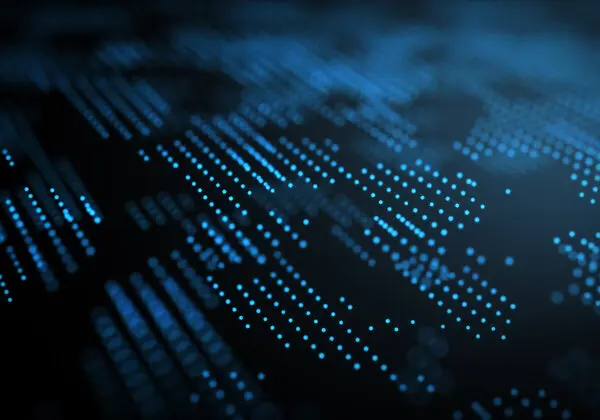The Synergy between Natural Language Processing and Computer Vision

Natural Language Processing (NLP) and Computer Vision (CV) are two distinct fields of artificial intelligence that have been making prominent strides individually. However, recent advancements in machine learning have brought these fields closer than ever before. The introduction of transformers, a groundbreaking neural network architecture, has led to a significant synergy between NLP and CV. At the core of this evolution is the attention mechanism, a key innovation that revolutionised both NLP and CV. The attention mechanism allowed models to focus on relevant information and capture complex relationships between elements, whether they are words in NLP or pixels in CV. In this blog, we will explore the journey of how NLP techniques have become relevant to computer vision tasks by following the impact of the attention mechanism on both NLP and CV and the synergy of the two fields uncovering the remarkable advancements that have shaped the field of artificial intelligence and its impact on the world.
The Role of Transformers in NLP
Natural Language Processing (NLP) covers the study of computer interaction with human language, focusing on programming computers to effectively process and analyse vast amounts of natural language data. Over the years, NLP has made exceptional progress, enabling a range of capabilities and tasks related to text processing.
A bit of history

It all started a few years ago, when all the fun in AI was happening in Computer Vision with the great success of Convolutional Neural Networks (CNNs), Generative Adversarial Networks [1], etc. on the ImageNet challenge [2].
Computer Vision was attracting headlines and NLP… not so much.
But the research in that area was also stepping up its game with some major breakthroughs.
Take Word2Vec, for example. It was introduced in 2013 and was one of the most popular techniques to learn word embeddings using a simple neural network [3]. But there are some disadvantages to this paradigm. One of them is when associating a fixed embedding to the word, we cannot handle cases in which words have multiple meanings.
Then there were Recurrent Neural Networks (RNNs) in 2014 [4] that took things to the next level. They not only improved classification tasks but also made it possible to do fancy stuff like sequence-to-sequence modelling, such as Machine Translation. RNNs are great at processing sequences because they have what they call "sequential memory." But hey, let's not ignore the downsides of RNNs. They have short-term memory problems and tend to deal with vanishing gradients. Not to mention, they are un-directional and they can be pretty slow too.
2015-2016 were the years that really tackled that pesky "forgetting" problem by bringing in the attention mechanism [5]. Now, this attention mechanism is like a fancy way of saying, "Hey, RNN, pay attention to this part of the sentence, it's important!" It's inspired by how our own eyes work when we read a book. We don't focus on every single word on the page; instead, we pay attention to the word we're currently reading. That's what attention does for the RNN—it tells it what to focus on and what not to forget. Taking it one step further, assigning weights to the inputs It's like giving the model a nudge to pay more attention to the parts that really matter for the task at hand. So, the key idea behind the attention mechanism is to give every input a chance to shine by assigning them attention weights.
And there it was, in 2017, BAM! The long-awaited ImageNet moment finally arrived for NLP, thanks to the transformer architecture. It crashed the party with a bang through the "Attention is all you need" [6] paper! Like the title already says, if RNNs and attention are so slow because of the sequential processing of RNNs, let us just use only the attention and throw away the RNN part! And voila! The Transformer was born! Simply put, transformers handle sequence data without being bound by any specific order. That means they can train faster with parallelisation, like a turbo boost! It's like a grand collaboration of all the inputs, working together in harmony. Transformers are here to shake things up, making NLP a force to be reckoned with.
The Emerge of Transformers in CV
Vision Transformers (ViTs) have emerged as an exciting extension of transformers into the realm of computer vision [7], [8], [9]. ViTs take a fresh approach to image processing by treating images as sequences of patches instead of individual pixels. This clever twist allows ViTs to tap into the power of the attention mechanism, capturing the broader connections and dependencies within visual information. ViTs have proven their value on popular image datasets like ImageNet, outperforming traditional CNNs in certain scenarios.
Transformers also showcase their power in computer vision tasks with DEtection TRansformer (DETR) [10], which is a transformer-based model designed specifically for object detection tasks. DETR has demonstrated competitive performance on object detection benchmarks while offering a more streamlined and interpretable approach compared to traditional methods.
Applications of ViTs also include segmentation tasks with a variant called Swin Transformer [11], which incorporates hierarchical representations and shifts the focus to capturing spatial information effectively. Swin Transformer achieves competitive performance on semantic segmentation benchmarks, demonstrating the potential of ViTs in this area.
The Revolution of Synergy of NLP and CV Fusion
The fusion of NLP techniques with computer vision through transformers has sparked an exciting synergy between these fields. By bringing together the power of transformers, which have revolutionised NLP, with computer vision, we're unlocking a whole new level of possibilities. I have been working with machine learning for over 15 years and the impact of the synergy between computer vision and natural language processing is something that has profoundly transformed the field of artificial intelligence.
It is awe-inspiring to see how combining the understanding of visual content with the comprehension of textual information can lead to more comprehensive and context-aware AI systems. With transformers in the mix, we can capture the context and connections within images, going beyond just looking at individual pixels. This means we can truly grasp the bigger picture and extract valuable information from images, like descriptions, attributes, or even text within the visuals themselves. This combination gives us a more holistic understanding of images and opens up new doors for exciting applications.
Applications and Impacts of the NLP-CV Synergy
The potential impact of this synergy reaches far and wide. By leveraging visual understanding and language generation, models can produce accurate and meaningful textual descriptions that capture the content and context of the given images.
Take autonomous driving, for example. We can teach vehicles to understand road signs, and traffic signals, and even interpret natural language instructions. This means smarter and safer self-driving cars that can navigate complex environments with ease.
In the field of medical imaging, the fusion of NLP and CV holds tremendous promise where by combining image analysis with text from medical reports, we can gain valuable insights for accurate diagnosis, treatment planning, and overall patient care.
NLP techniques integrated with CV can generate descriptive captions for images (image captioning). This can be useful in applications like image indexing, content summarisation, and accessibility for visually impaired individuals.
In Social Media Analysis, models can gain insights into user behaviour, sentiment analysis, and brand perception, and even identify potentially harmful or inappropriate content. The combination of NLP and CV can enable machines to understand and answer questions based on visual content (Visual Question Answering). Models can provide accurate and context-aware answers, enhancing human-machine interaction and enabling applications like virtual assistants and chatbots.
The fusion of NLP and CV can facilitate cross-modal retrieval, where information can be retrieved from one modality (text or image) based on queries from another modality. This can be useful in applications like image-based search using textual queries or retrieving textual information based on visual cues, opening up possibilities in e-commerce, content recommendation, and image-based information retrieval.
Future Horizons of NLP and CV Fusion
But it doesn't stop there. This synergy between NLP and CV has the potential to transform various industries. From e-commerce to surveillance systems, and even augmented reality, the ability to bridge the gap between language and visual information opens up endless possibilities. We're getting closer to building intelligent systems that can truly understand and interact with the world in a more human-like way. The future is bright, and in Deeper Insights, we continuously explore the potential of this powerful fusion between NLP and CV.
Final Thoughts
The fusion of NLP and CV through the power of transformers has opened up new possibilities in the field of artificial intelligence. Vision Transformers and cross-modal transformers have showcased distinguished results in image-related tasks, bridging the gap between visual and textual understanding. As research progresses and technology advances, we can expect further breakthroughs, enabling machines to perceive and comprehend visual data with unprecedented accuracy and context awareness. The journey of NLP's relevance to computer vision is undoubtedly an exciting and promising one, shaping the future of AI and revolutionising the way machines interact with visual information.
By integrating NLP techniques and transformers into computer vision, we have witnessed a convergence of two powerful fields, amplifying their individual strengths and capabilities. The ability to capture global dependencies, understand textual information within images, and bridge the gap between language and visuals holds immense potential across diverse domains, from autonomous systems to healthcare and beyond. As this synergy continues to evolve, we can anticipate groundbreaking applications and advancements that will reshape industries and push the boundaries of what machines can achieve. The journey of NLP's relevance to computer vision is an ongoing saga, and we eagerly await the next chapters of innovation and discovery that will further propel the fusion of these two dynamic fields into uncharted territories.
Let us solve your impossible problem
Speak to one of our industry specialists about how Artificial Intelligence can help solve your impossible problem

















